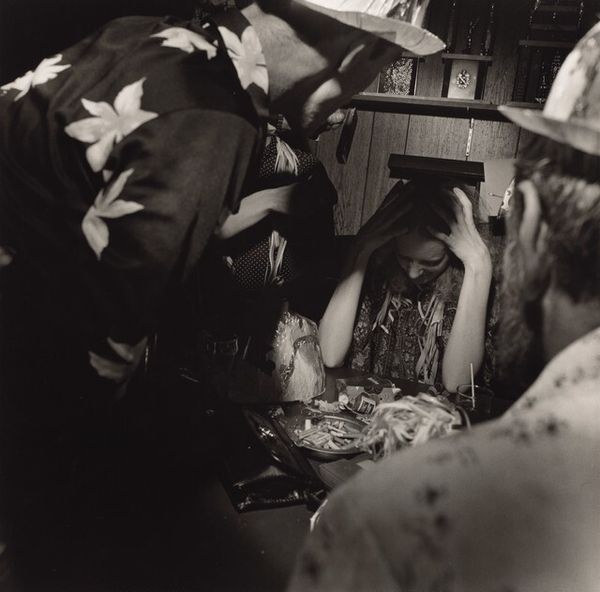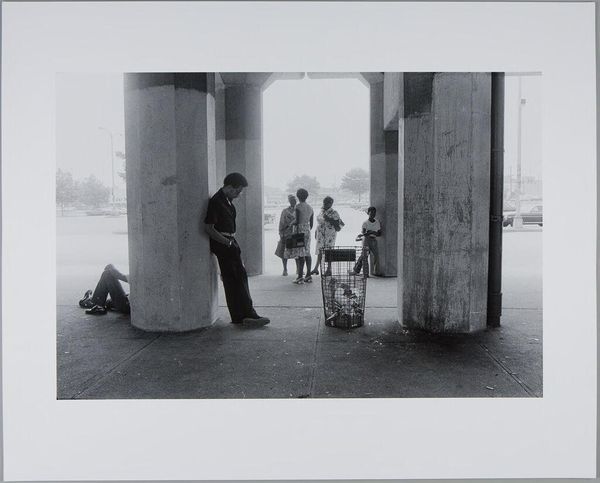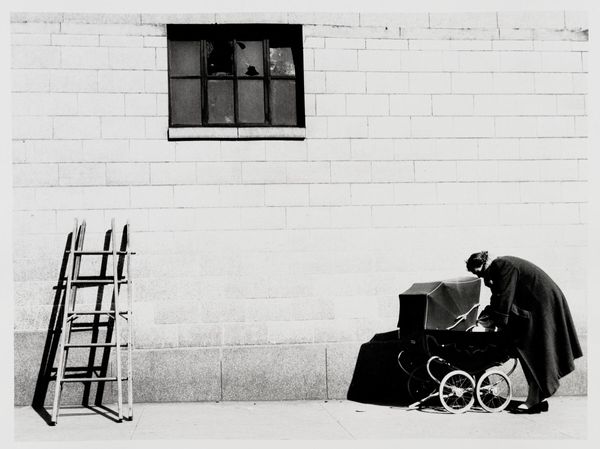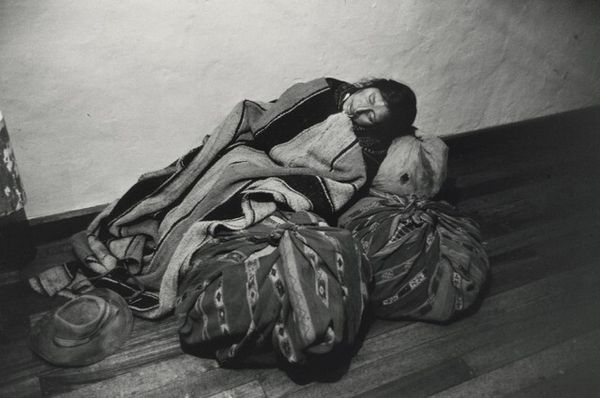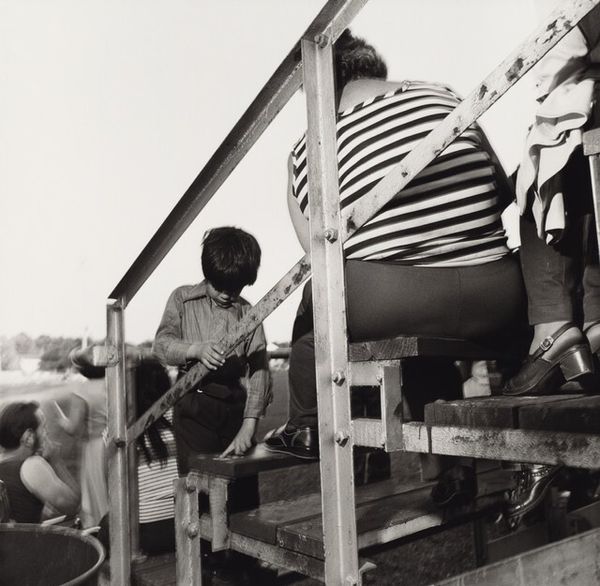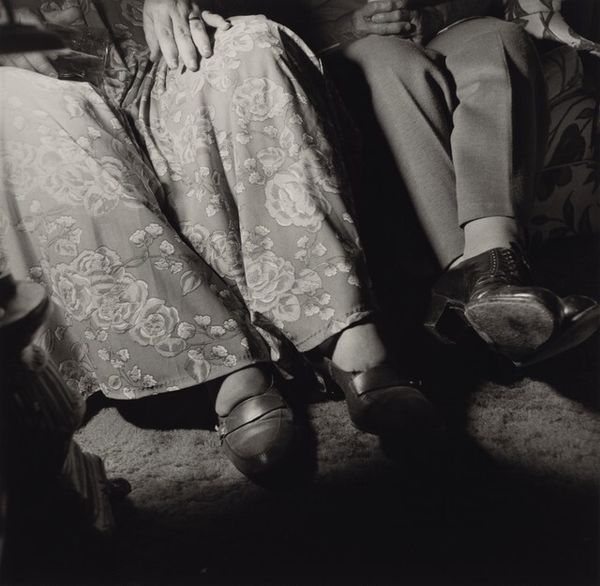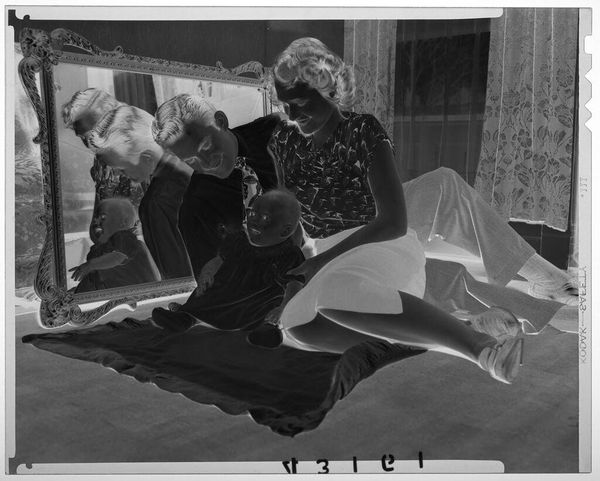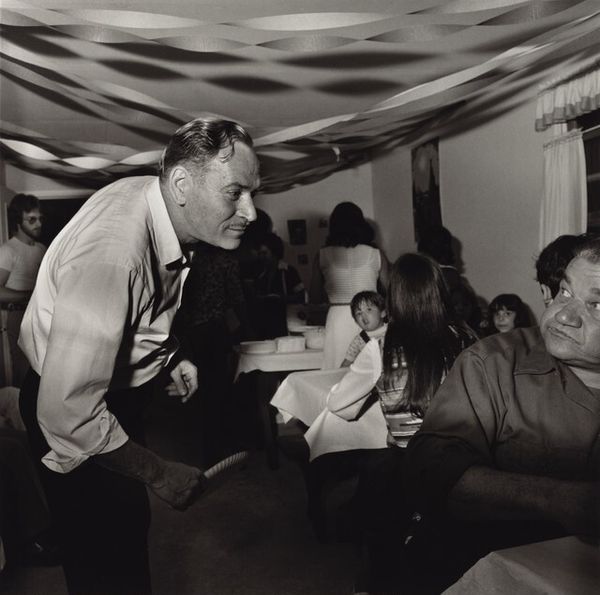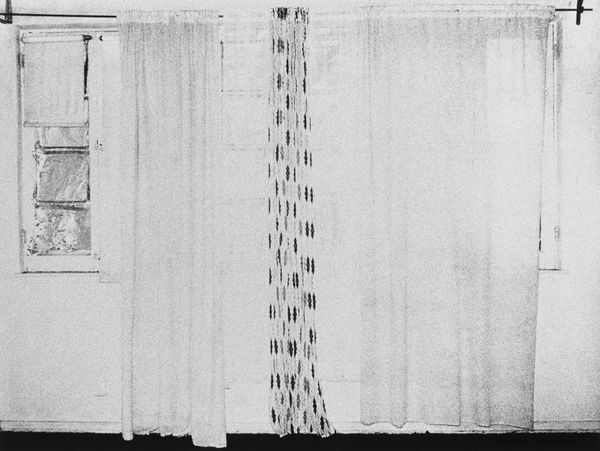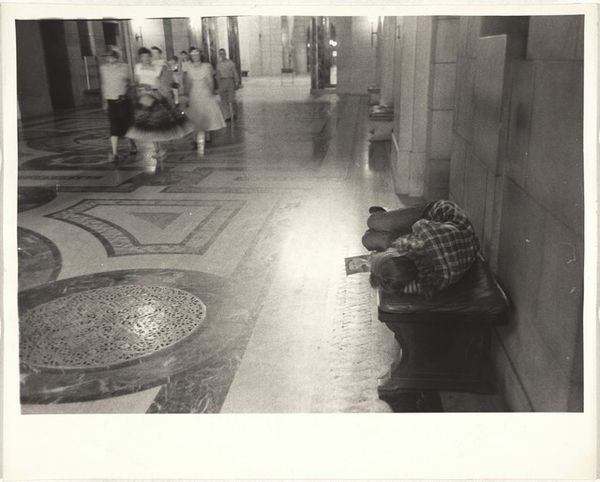
photography, gelatin-silver-print
#
portrait
#
black and white photography
#
street-photography
#
photography
#
black and white
#
gelatin-silver-print
#
monochrome photography
#
genre-painting
Dimensions: image: 34.7 × 35.4 cm (13 11/16 × 13 15/16 in.) sheet: 50.3 × 40.4 cm (19 13/16 × 15 7/8 in.)
Copyright: National Gallery of Art: CC0 1.0
Curator: This gelatin-silver print, taken by Larry Fink sometime after 1980, is titled "Skating Rink, Martins Creek, Pennsylvania." The monochrome tones initially give the image a timeless feeling. Editor: I'm struck by the stillness; almost resignation. It feels heavy, the dark tones contribute to the melancholic atmosphere. Curator: The image offers a glimpse into a specific moment and place, doesn't it? Martins Creek, Pennsylvania, a small town, likely during a local event at the rink. What do you think Fink wanted to reveal with this composition? Editor: Well, his work often focuses on social dynamics and marginalized communities. Looking closer, the mural of tropical landscapes creates such an artificial escape, it underscores a deep sense of disillusionment with American ideals. I wonder if Fink critiques the socio-economic realities of this community through the lens of leisure? The sitter herself—how might she feel about the depiction, and how do we navigate the ethical complexities of the image itself? Curator: Those questions regarding representation are essential. Fink has documented many social scenes and focused on figures outside mainstream power. We have to consider his role as an outsider looking in, and how his photographs function within power dynamics. This image seems part of that, no? High contrast, slightly tilted axis... how is this choice relevant to our considerations? Editor: Absolutely. The slight unease created by the tilted frame adds a layer of instability, challenging normative aesthetics but potentially emphasizing a pre-existing vulnerability within the subject and the community. The mural's fakeness, the dark floor...these aesthetic cues play directly into contemporary critical approaches around issues of social performance, alienation and authenticity. It really asks us to consider what constitutes "real" American experience. Curator: I agree. It definitely prompts reflections about socio-economic disparities in late 20th-century small-town America and broader questions concerning authenticity, leisure and representation. Thank you for pointing out all of this! Editor: Likewise, it is interesting to see an everyday situation imbued with such emotion and meaning through this historical and social context.
Comments
No comments
Be the first to comment and join the conversation on the ultimate creative platform.

